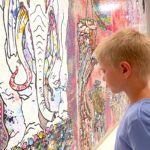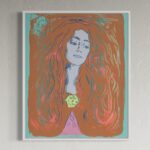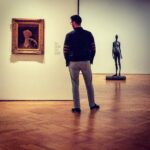
Reed V. Horth tell how he uses social media to build business.
| From SOUTH FLORIDA BUSINESS JOURNAL. JUNE 1, 2013. | |||||||
| http://www.bizjournals.com/southflorida/news/2013/06/01/how-i-embraced-social-media-to-build.html?ana=twt&page=all | |||||||
 |
|||||||
Editor’s Note: “How I” are first-person accounts of how someone has met a business challenge.
Art galleries have a traditional model of clients walking in, seeing a piece of art and making a purchase.
In 1996, my first gallery refused to allow a computer in the gallery for fear staff might avoid walk-in clients. However, understanding that client follow-ups are essential, I purchased my own computer and began to communicate with walk-ins and prospects online.
In 2003, sensing that the market was shifting, I changed the paradigm to mitigate slow foot traffic in our varied gallery locations throughout Florida. My multi-tiered approach focused on social media and advantageous exchange rates in UK/European markets to expand our international business virtually, eventually phasing out the need for a brick-and-mortar gallery altogether.
Through an ever-evolving subset of social media sites, including Quintessentially, ASmallWorld, Facebook, LinkedIn, Pinterest, Twitter and others over the years, our clients have located prominent artists, obtained required information on the piece of interest, edified themselves as to our dealer credentials and made their purchases online.
Further, new clients have discovered us through their friends and business contacts and made contact knowing that we were trusted resources for people they know personally.
Using this method, our general price-point has escalated from $2,000 to $30,000 a piece to individual works of art over $5 million in the past five years alone, including original works from Picasso, Dali, Modigliani, Indiana, Warhol and others.
We have developed virtual relationships with over 25,000 museums, Forbes and Fortune 500 members, private dealers, investors and clients around the world and here in South Florida, sometimes never meeting the clients face-to-face.
In the past months we have sold high-end works to clients in Australia, Ireland, Greece, France, Canada, Hong Kong, New Zealand, Brazil, London, Germany, UAE and throughout the United States.
Although art buying is often passion-based, our buyers tend to be tech savvy and pragmatic, seeking the best price for a work they can get on an artist they are already familiar with.
As the virtual world, and particularly the art world, is rife with dilettantes and charlatans, platforms such as LinkedIn allow prospective clients to see recommendations, awards and conferred honors you have earned over your career and edify themselves that they are dealing with someone professional.
Involvement in forums and regular posting of articles relevant to your craft grow your audience and brand amongst group members.
Facebook, Pinterest, Tumblr and others allow prospects to gain a social sense of who you are as a person, your family, your interests, etc. This allows them to feel that they are dealing with a friend.
Obviously, this level of personal exposure requires diligence to maintain a professional presence, but it also incorporates a sense of accountability and fair-play with buyers and sellers.
Further, seeing what people share and “LIKE” provides valuable demographic data on individual clients that can be later utilized in direct marketing efforts.
Twitter allows you to farm non-traditional clients and expose them to your company passively.
Houzz, an interior design site, has allowed persons and professionals who are in the process of purchasing items for homes to see the artworks and interact with me though forums.
Our regular posts on our blog, and the associated tags, allow people first to discover us through traditional Google searches, and then gain a sense of our scholarship on art in general. Interactions with readers via feedback allow us to answer questions quickly and add them to our databases.
As social media sites are ever-evolving, we constantly discover and experiment with new platforms which place prospective buyers and sellers within the same context. As more high-end buyers turn go online for their investments, brand familiarity and direct social engagement will be key in culling and keeping prospects and expanding market reach.
Reed V. Horth is president of Robin Rile Fine Art, Miami. www.robinrile.com.



